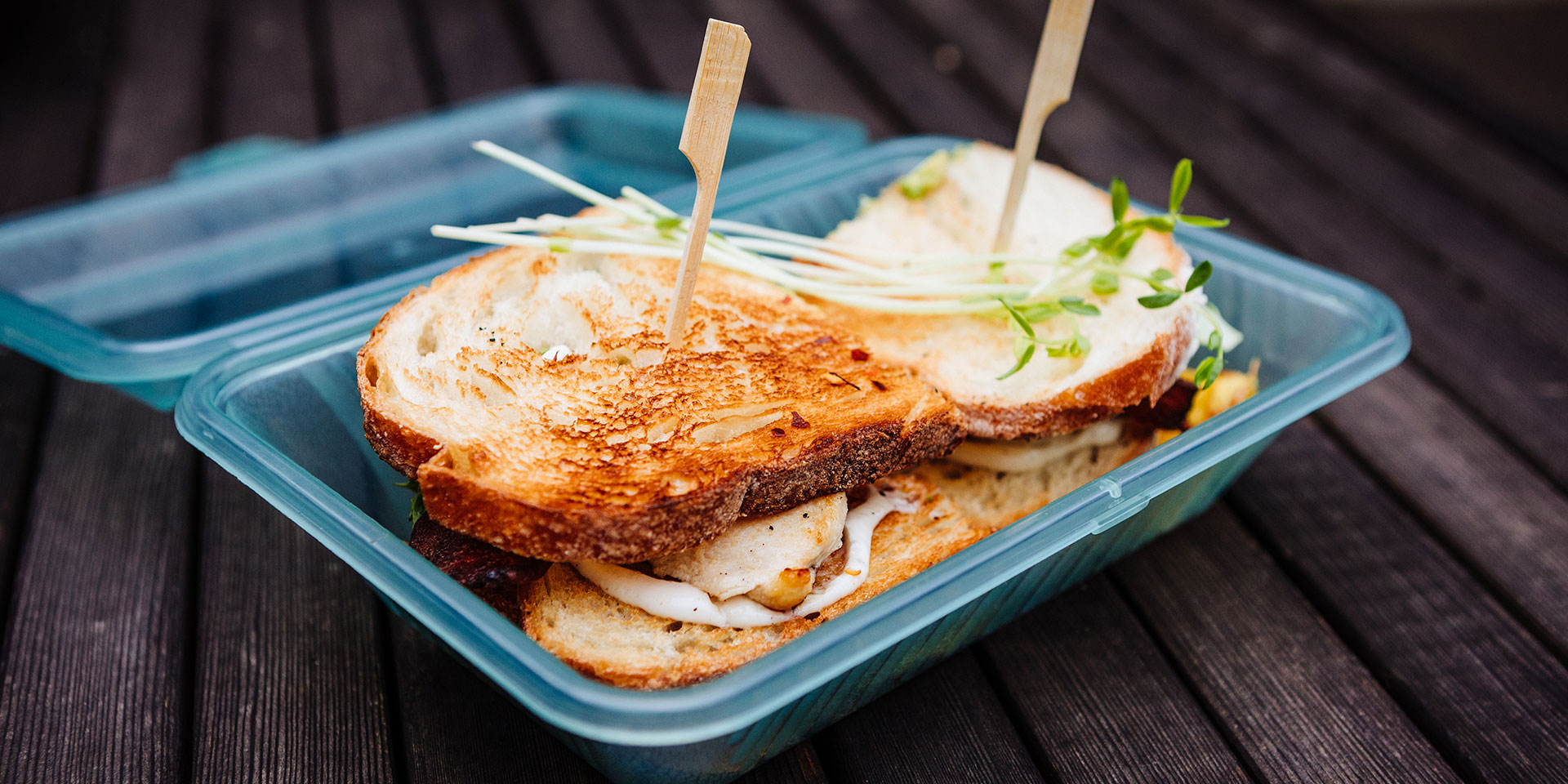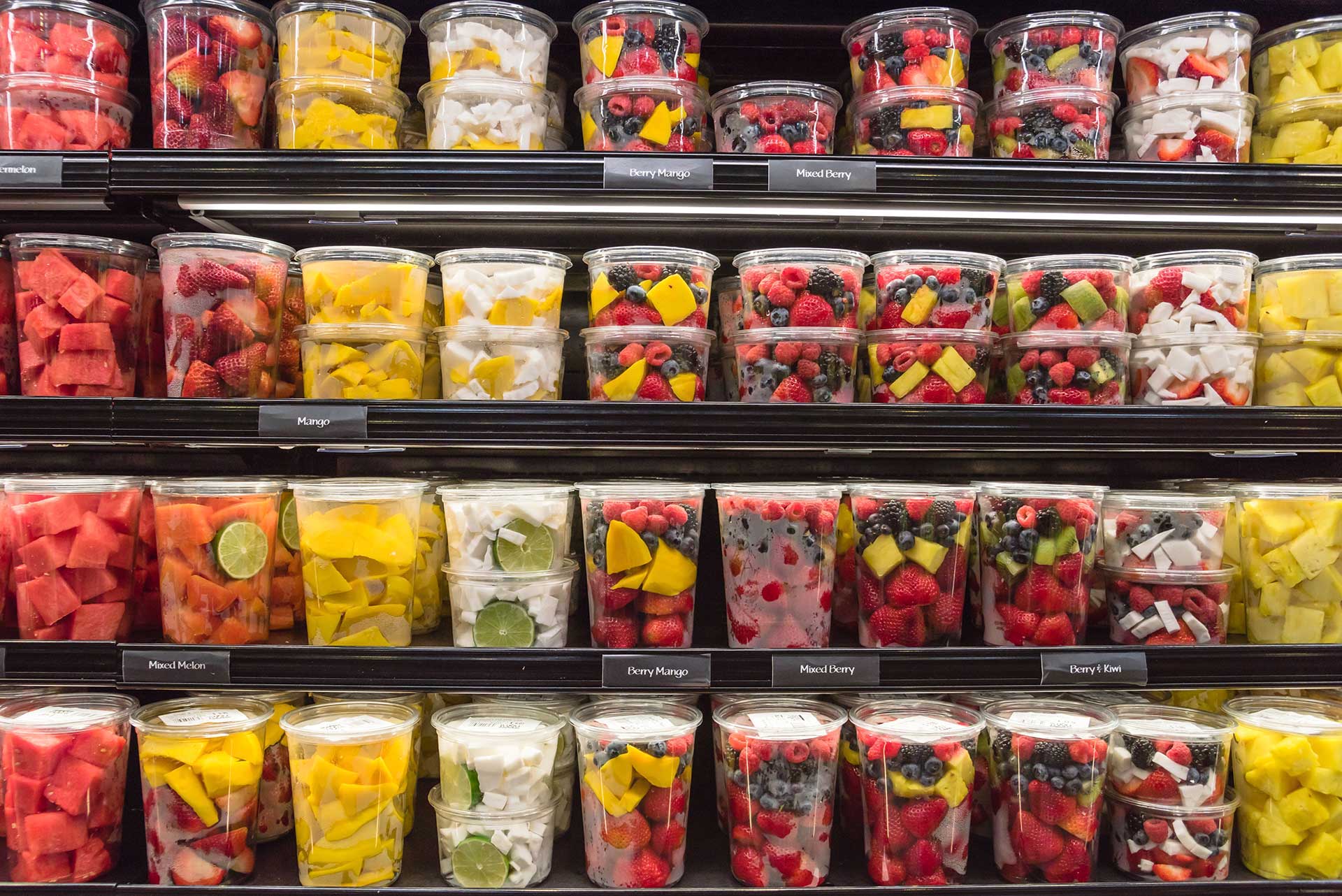Can Reusables Bounce Back, Post COVID-19?
Takeout orders increased 237 percent during the COVID-19 pandemic. With each delivery of burgers, sushi and tacos packaged in single-use containers, accompanied by plastic utensils and delivered in a plastic bag, it’s no surprise that residential waste increased during the pandemic, too.
The combination of takeout, grocery deliveries and online ordering contributed to a 30 percent increase in residential waste while people were staying at home. An additional factor was the promotion of single-use plastic products as “the most sanitary choice” by public health agencies and industry groups, including the Plastics Industry Association.
“Right when COVID started, a consortium of plastic bag manufacturers…banded together and tried to roll back city and statewide plastic bag bans that were in the process of being implemented,” explains Matt Prindiville, CEO of Upstream, a nonprofit dedicated to preventing plastic pollution, explaining how the plastic industry capitalized on the fears of the moment. “They didn’t just target bags; it became a referendum on the concept of reuse in general and there was some collateral damage.”
In the United States, COVID-19 increased the demand for single-use plastics, including disposable food packaging, up to five percent, adding to the 8.3 billion tons of plastic that has been tossed into the trash since the 1950s. Almost all of the single-use plastic bottles, utensils, coffee cup and food packaging end up in landfills or the natural environment, including eight million tons of plastic that are floating around in the ocean.
Pushing Back Against Plastic Waste
It wasn’t that consumers intended to become more wasteful, notes Dianna Cohen, co-founder and CEO of the Plastic Pollution Coalition.
“The [plastic] industry spun it in their messaging so that a fear developed around using reusable materials and raised concerns about potential health threats,” she explains. “People just followed what they were being told.”
In nine states, including New Hampshire, Maine and Washington, long-awaited plastic bag bans were put on hold and companies like Starbucks and Dunkin banned reusable cups and Kroger, Costco, Target and Walmart banned reusable shopping bags, leaving consumers who wanted to minimize their single-use plastic waste with few options.
Consumers pushed back. Several petitions popped up online, urging companies to bring back reusables during the pandemic. Their pushback was supported by health experts from scientists and doctors to public health experts, 115 of whom signed an open letter defending the safety of reusables during the pandemic, noting that the science did not support the bans.
Consumers weren’t just signing petitions; they were also taking action to reduce plastic waste. In fact, some companies reported that the use of reusables increased during the pandemic. Online grocers Loop and Zero Grocery that sell products in reusable containers both reported revenue increases during COVID.
“One of the great impacts was the awareness-raising that took place during the pandemic when people started seeing to-go food packaging everywhere [and] it helped reignite a stronger sentiment that ‘this is not okay,’” Cohen says. “Now, consumer demand for reusables is stronger than ever.”
Seizing the Moment
In some parts of the country, including San Francisco, the reusables movement was going strong — but COVID-19 threatened the momentum.
Many consumers hated the packaging push right from the start, In San Francisco, Lindsey Hoell, CEO of Dispatch Goods, a startup that partnered with companies in San Francisco’s business district to cover the cost of disposable containers for grab-and-go meals for their employees, watched as restaurants closed and the transition to working from home meant that companies were no longer providing the perk.
Hoell pivoted, creating partnerships with restaurants to offer reusable takeout containers for takeout and deliveries; customers were hungry for the option to have their takeout delivered in reusable containers.
“We’ve been able to partner with some direct-to-consumer food delivery services [like DoorDash] because the number one reason cited for people cutting back on takeout was the packaging,” she says.
Dispatch Goods signed on with 37 new restaurants, diverting 125,000 single-use takeout containers from the waste stream since August 2020.
“There were customers who were going to Zuni because they knew that their food was coming in reusable containers,” she says. “There are a lot of indicators that customers are using their purchasing power [and] our voices are really strong motivators for restaurant owners to make these choices.”
The Return to Reusables
In June, Starbucks stores in the United States invited customers to bring reusable cups once again and grocers like Fred Meyer, Albertsons, Walmart, Target and Sprouts reversed their bans on reusable shopping bags.
Prindiville notes that global brands like McDonald’s, Burger King and Nestle announced plans to pilot reusable containers during the COVID-19 pandemic. Doordash also focused on reducing single-used plastic waste, introducing a “utensil opt-in” feature that would include utensils with deliveries only upon request and customers can choose reusable containers when ordering from participating restaurants.
Although the pandemic shone the spotlight on the need to address single-use plastic waste, demand for reusables must continue to grow to make a meaningful dent in the number of clamshell containers, coffee cups, disposable utensils and other single-use plastic items being sent to the landfill, according to Prindiville.
Legislation can play an important role. Several states, including Connecticut, Maine and Colorado reintroduced plastic bag bans that had been put on hold during the pandemic.
The state legislature in Maine just passed a bill to establish extended producer responsibility programs for packaging that would require manufacturers to help manage and fund the collection and recycling of their products. The goal, Prindiville says, is to force companies to think about — and address — their waste.
“The future is all about systems like how to companies set up systems to get us what we want and need without the waste,” he explains. “Now that the world is opening up again…what we’ve seen is a wholesale return to the momentum that was happening before COVID. So, it got a little backburnered due to COVID but interest in the issue has continued to bubble up.”
Consumers need to continue pushing for reusables, too.
“We wouldn’t be where we are without consumers caring about plastic pollution,” Prindiville says. “Consumer concern about these issues is driving a lot of brands to make changes.”
Get the latest food news, from FoodPrint.
By subscribing to communications from FoodPrint, you are agreeing to receive emails from us. We promise not to email you too often or sell your information.
Top photo by DAVID/ Adobe Stock.
More Reading
Can sushi be sustainable?
August 26, 2024
The true cost of a restaurant meal
October 27, 2023
“Skip the Stuff” Laws Aim to Get Rid of Takeout Trash
February 16, 2023
McDonald’s and Black America
January 24, 2023
New Report Shines a Light on the Seafood Fraud Rampant Across the U.S.
September 12, 2022
Restaurants Start to Adopt Reusable Serviceware
May 23, 2022
College Students Fight Climate Change by Fighting Plastic
April 12, 2022
The True Cost of Cheap Chicken
February 16, 2022
Food is Complicated — FoodPrint's New Podcast is Here to Help
February 8, 2022




